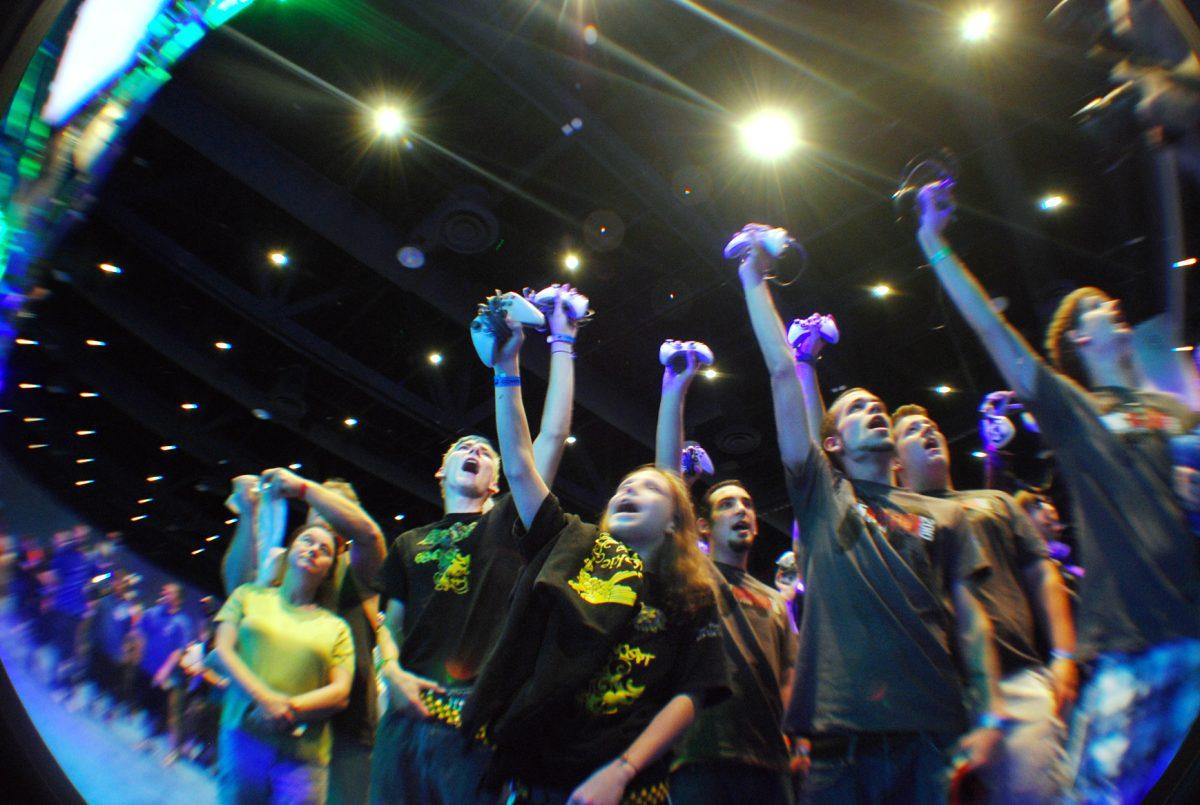Major League Gaming, America’s premier professional gaming league, held their 50th tournament on August 27-29 at the Raleigh Convention Center. The event, one of only five to be held this year, drew gamers and fans from all over the country, as well as many students from NC State.
Participants competed on both professional and amateur levels in Halo 3, Tekken 6, Super Smash Brothers Brawl, World of Warcraft and Starcraft II. This marked the first time that Starcraft II was played professionally in an MLG tournament, giving Raleigh fans a first glimpse of the future of e-sports.
E-sports is growing quickly according to the event’s MC who told the fans in attendance that just 5 years ago, there were only fifty people in the crowd. At this event, there were over 500 mostly teenaged and young adult fans in the bleachers before the first event, not to mention thousands of others walking around the show floor.
“I love my e-sports,” said Will Gantt, who came all the way from Baltimore to attend the event. “It’s just like any other sport.”
Looking around the Raleigh Convention Center, it was clear that professional gaming has achieved mainstream status. Every square foot of the floor was overtaken by gaming enthusiasts with huge smiles on their faces and bags of gaming-related swag around their arms.
The MLG setup included a main stage on which the featured Halo 3 action took place, with two banks of four game systems and TVs set up on the stage, one for each team. Overhead, and throughout the convention center, giant video screens displayed the events currently in progress.
Scattered around the rest of the floor were various roped-off islands wherein competitors in the other events competed in their qualifying and final matches throughout the day. Each of the event’s sponsors also held their own walk-in tournaments under large floor tents that were open to anyone in attendance. Each sponsor had additional booths setup where t-shirts and other assorted merchandise was given away and sold throughout the event.
Sony was also on hand to demonstrate Killzone 3, PS3’s new flagship 3D shooter. The game won’t be released until February of 2011, but attendees were given access to a hands-on demo in full 3D. This is the first time the game was playable on the east coast, as well as the first time anywhere in America that gamers could experience the game in 3D.
The focus of the event, however, was on the competitive gaming, and the nation’s best e-athletes fought for supremacy in bracketed matches. Some events such as Starcraft II and Super Smash Brothers Brawl were played one-on-one, with match-ups chosen at random, while others were played as teams in scheduled elimination matches.
Halo 3, MLG’s main event, is played in teams of four, with each member given a different role on the team according to his particular strengths. On Team Instinct, the favorites to win going into the competition, Scott Holste (Cloud) acts as the go-to sniper, while founding members (and twin brothers) Jason Brown (Lunchbox) and Justin Brown (Roy) are the core of the team. Team Instinct’s current configuration, rounded out by sharpshooter Kyle Elam (ElamiteWarrior), won the previous two tournaments in Halo 3, which made them undefeated going into the weekend’s event.
In the finals on Sunday, Instinct faced off against Final Boss, and lost 1-3 in the finals. Had Instinct prevailed, it would have been what Roy calls “A three-peat, which has never been accomplished in MLG history in Halo 3.” Falling short of this milestone was a crushing blow for the team, but it is not the first time Instinct has come in second.
“We came in second three times before we won,” Roy said, “So we certainly know the feeling of not getting over the hump.”
Becoming an MLG champion is a difficult and often cutthroat business. “It takes dedication, determination, time and never giving up,” Lunchbox said. But becoming two-time champions also took a roster change, which meant that the team had to let go of two of its members, FearItself and Neighbor, earlier this year.
As it turned out, picking up ElamiteWarrior and Cloud was exactly the change that the team needed to finally take first place.
“The competition is unbelievable,” Roy said. “In the top 8, anyone can win. The skill gap (between teams) is very small.”
But for many pro gamers, the hard work and hours are totally worth it. In addition to the pride of victory, many e-athletes make a lot of money. All gamers participating in the event are paid $350 travel stipends and many gamers are sponsored by companies such as Old Spice and Dr.Pepper. In addition, placing high in the tournament can yield huge winnings.
“The most we have ever made is $15,000 per team member for coming in 2nd at the nationals,” Lunchbox said. “The 1st place team members made $25,000 each.”
The MLG tournament series will continue later this year in Washington D.C., with the finals to be held in Dallas in November.








